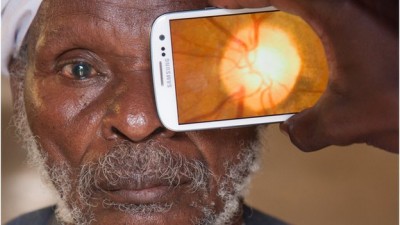My first mobile phone made calls, sent about 200 characters of text and weighed enough that to use the term mobile was a slight exaggeration. My most recent phone looks like it might be able to download an app that can do my job for me!
The app is currently being trialled in parts of Africa devoid of optometrists.Having had the opportunity myself to visit Africa as part of a Vision Aid Overseas team I met many people who were effectively blind due to not having spectacles. The statistics are quite staggering. Of the 285million people worldwide that the World Health Organisation suggests are visually impaired almost 230 million could be cured by spectacles alone.
Recently Vision Aid Overseas has realised the enormity of the problem and has focussed more of its work on educating and training local people to provide their own eye care services.
Perhaps a tool for this in the future could be the PEEK mobile phone app recently reported on by the BBC. The app uses the phone camera to scan the lens of the eye looking for cataract, and by illuminating the retina with the camera flash it can look for disease at the back of the eye. A shrinking letter on the screen is used as a very basic vision test. The patients record and their exact GPS location is stored on the phone allowing the images to be e-mailed to doctors and the patients to be located should follow up be required.
At the moment the app is being trialled on 5000 people in Kenya. With the image of their eye being taken by both the phone and standard retinal cameras that are being transported in the back of a van. Doctors at Moorfields eye hospital in London are comparing the ocular images to see how good a job the phone can do.
While we are hoping to start sending out more communication to our patients via e-mails and mobile phones, we will not be using them for your annual eye exams ……. quite yet!













